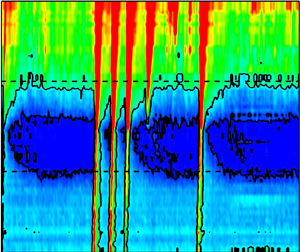Most cited
This page lists all time most cited articles for this title. Please use the publication date filters on the left if you would like to restrict this list to recently published content, for example to articles published in the last three years. The number of times each article was cited is displayed to the right of its title and can be clicked to access a list of all titles this article has been cited by.
- Cited by 1
Particulate gravity currents along V-shaped valleys – ERRATUM
-
- Published online by Cambridge University Press:
- 23 September 2009, p. 475
-
- Article
-
- You have access
- Export citation
- Cited by 1
Axial friction coefficient of turbulent spiral Poiseuille flows
-
- Published online by Cambridge University Press:
- 30 April 2024, A6
-
- Article
-
- You have access
- Open access
- HTML
- Export citation
- Cited by 1
Large-eddy simulation-based shape optimization for mitigating turbulent wakes of a bluff body using the regularized ensemble Kalman method
-
- Published online by Cambridge University Press:
- 12 December 2024, A31
-
- Article
- Export citation
- Cited by 1
Rounded-corners-induced re-entrant non-occlusion in a horizontal tube
-
- Published online by Cambridge University Press:
- 24 January 2024, A49
-
- Article
- Export citation
- Cited by 1
Turbulence distortion and blockage in the induction zone of a horizontal axis turbine
-
- Published online by Cambridge University Press:
- 25 November 2024, A25
-
- Article
-
- You have access
- Open access
- HTML
- Export citation
- Cited by 1
Rheological measurements and transition to turbulence for moderate Reynolds number inertial suspensions
-
- Published online by Cambridge University Press:
- 31 May 2024, A19
-
- Article
- Export citation
- Cited by 1
An analytical model for the slip velocity of particles in turbulence
-
- Published online by Cambridge University Press:
- 24 September 2024, A1
-
- Article
-
- You have access
- Open access
- HTML
- Export citation
- Cited by 1
Model computations of the influence of carbon impurities on the ionization relaxation in krypton shock waves
-
- Published online by Cambridge University Press:
- 26 April 2006, pp. 455-467
-
- Article
- Export citation
- Cited by 1
The role of the surface density field in subtropical gyre circulation
-
- Published online by Cambridge University Press:
- 26 April 2006, pp. 227-247
-
- Article
- Export citation
- Cited by 1
Wave Energy – A Design Challenge. By RONALD SHAW. Wiley, 1982, £18.50 (cloth). Ellis Horwood £8.50 (paper). 202 pp.
-
- Published online by Cambridge University Press:
- 20 April 2006, pp. 467-470
-
- Article
- Export citation
- Cited by 1
Taylor vortices in yield stress fluids with static wall layers on the outer cylinder
-
- Published online by Cambridge University Press:
- 24 November 2023, A3
-
- Article
- Export citation
- Cited by 1
A particularly unstable film
-
- Published online by Cambridge University Press:
- 22 June 2022, F1
-
- Article
-
- You have access
- HTML
- Export citation
- Cited by 1
Book Review - Singularities: Formation, Structure, and Propagation. J. Eggers & M. A. Fontelos. Cambridge Texts in Applied Mathematics, Cambridge University Press, 2015. Paperback, 453+xvi pp. ISBN 9781107485495. £39.99.
-
- Published online by Cambridge University Press:
- 13 September 2016, pp. 749-750
-
- Article
- Export citation
- Cited by 1
On the measurement of turbulent magnetic diffusivities: the three-dimensional case
-
- Published online by Cambridge University Press:
- 24 October 2013, pp. 457-472
-
- Article
- Export citation
- Cited by 1
Nonlinear dynamics and acoustic radiation of coherent structures consisting of multiple ring–helical modes in the near-nozzle region of a subsonic turbulent circular jet
-
- Published online by Cambridge University Press:
- 11 October 2023, A8
-
- Article
- Export citation
- Cited by 1
Wave turbulence in the two-layer ocean model
-
- Published online by Cambridge University Press:
- 01 September 2014, pp. 309-327
-
- Article
- Export citation
- Cited by 1
Analysis of low-frequency wave scattering by turbulent premixed flame
-
- Published online by Cambridge University Press:
- 26 August 2009, pp. 137-164
-
- Article
- Export citation
- Cited by 1
Turbulent spot transit of a hypersonic laminar separation
-
- Published online by Cambridge University Press:
- 31 January 2022, A25
-
- Article
- Export citation
- Cited by 1
Advective balance in pipe-formed vortex rings
-
- Published online by Cambridge University Press:
- 12 December 2017, pp. 773-796
-
- Article
- Export citation
- Cited by 1
Ball release experiments on a centrifuge: misalignment between the buoyancy force and the axis of rotation
-
- Published online by Cambridge University Press:
- 15 September 2006, pp. 435-454
-
- Article
- Export citation



























































